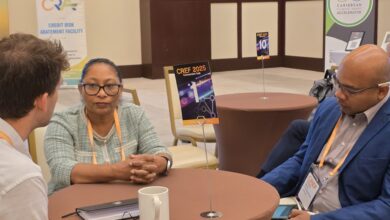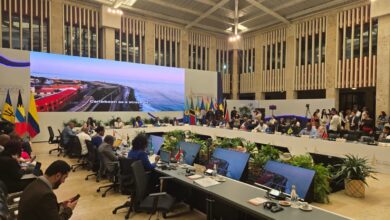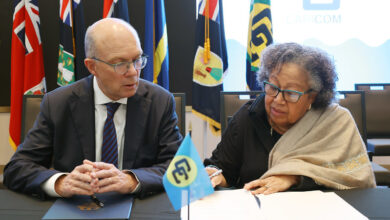(CARICOM Secretariat, Georgetown, Guyana) – Energy at the CARICOM Secretariat is now managed through a state-of-the-art Building Energy Management System (BEMS).
This information technology allows the tracking of energy supplied and used by the national grid and from the Solar Photovoltaic Power Generation Plant, which was constructed on the grounds of the CARICOM Secretariat.
The staff of the Information Integrated Systems (IIS) and Administrative Services Unit were trained recently in the use and management of the BEMS, as well as the solar photovoltaic, battery, and power conditioning systems. They can now remotely control air conditioning and gather real-time energy data for decision-making.
In a recent interview with the Communications Unit, the Project Officer with technical oversight of the project, Mr. Ian Cole, explained some of the decisions that have resulted in reduced reliance on the national grid for power supply to the building. On the day of the interview, he highlighted graphs and charts that showed 64 per cent of the Secretariat’s energy was generated from the PV system. Thirty-four percent (34%) was used from the Guyana Power and Light (GPL) grid, while almost 2% came from battery and power conditioning systems.
Mr. Cole explained that while the battery generates significantly less power, it is necessary for energy storage and power quality regulation.
The data generated by the BEMS can be aggregated by quadrants or equipment, for example, ACs, computers, lights, and outlets. It also indicates the temperature and humidity, including outdoor and indoor temperatures for every part of the building.

On Friday, March 31, the implementing partners – Japan, Government of Guyana, and CARICOM Secretariat – signed the certification of completion of the soft component of the project which entailed a month-long training of Maintenance and Information Technology Staff of the CARICOM Secretariat to operate and maintain the BEMS.
The signing involved Guyana, represented by Ms. Gayle Best, Deputy Chief Executive Officer of the Guyana Energy Agency; Japan, represented by Mr. Kei Otsu, Chief Electrical Engineer of Kansai Transmission and Distribution Inc.; and the CARICOM Secretariat, represented by Mr. Ian Cole, technical lead on the project for the Secretariat.

KANSAI is the official consulting firm supporting the Japan International Cooperation Agency (JICA), the executing agency of the project.
The CARICOM Secretariat’s renewable energy project gives effect to the CARICOM Energy Policy which envisions, inter alia, the sustainable and secure energy supplies through diversification of energy sources; the accelerated deployment of renewable and clean sources of energy supplies
towards increased energy supply diversification and affordability; and the strengthening and enhancement of the human and institutional capacities in the Community energy sector.






